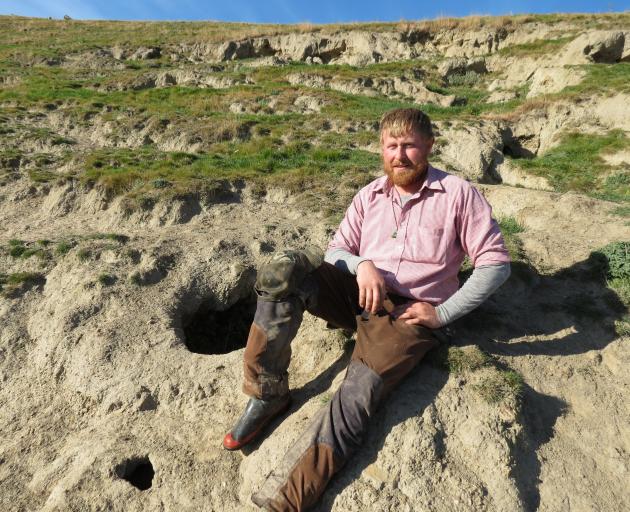
Gem Lake station manager Angus Barr said an ORC contractor's average counts per night showed about 49 to 55 rabbits this time two years ago, between 170 to 190 the same time last year and between 250 to 270 this year.
He said one night prior to lambing they had shot 170 throughout the farm.
''Last year was a good season for rabbits and this year the rabbit population has exploded exponentially,'' Mr Barr said.
He said the virus had been released too late in the autumn, when vectors such as flies and fleas were inactive, so the disease could not be spread.
Shepherd Isaac Allan showed Southern Rural Life a small area where there had been an old land slip, and the rabbits made good use of it with about 40 or 50 in burrows and causing damage.
Lloyd Brenssell, who owns Fernvale Genetics in Moa Flat, and leases Gem Lake station, said he had seen a spike in rabbit numbers on his properties and had little faith in the K5 virus.
''It is a reasonably good breeding season for them, rabbits being rabbits.''
He said he had a good control programme in place on the properties, including shooting, which was on hold during lambing.
He said K5 had been released too late in the autumn, but with no fly activity to transmit the virus, it had limited success.
Coal Creek sheep and beef farmer Ray Gunn said there were as many rabbits this year as there were the same time last year.
''There are definitely not less and they were pretty bad last year.''
He said he had not seen any evidence of the K5 virus and believed it had been released too late in the autumn.
He said he had heard the kill rate was expected to be 40%, but the way rabbits breed, it would not take long before the populations recovered.
''Forty per cent is not cutting the mustard at all.''
He said he could not do any shooting during lambing for the next six weeks.
''The rabbits have got free rein at this time.''
Island Block sheep and beef farmer Mike Power said rabbit numbers had increased, [compared to last year] and the virus had not done anything.
ORC spokesman Scott MacLean said the rate of population decline in rabbits as a result of the K5 introduction was about 34%.
''This is very close to the range predicted pre-release, which was up to a 40% reduction,'' Mr MacLean said.
He said K5 had been found in the wild rabbit population so in that regard, it had been successful.
''The virus has had a better effect in some parts of Otago compared to others.''














